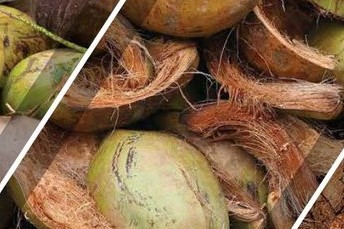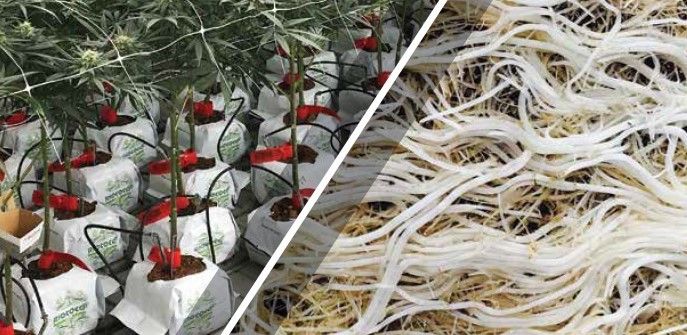- Premium solutions & products
- Global presence with local support
- Quotation within 24 hours
+61 447 734 654 
- Request a quote
- Become a customer
+61 447 734 654 
Coco coir is one of the largest used segments of growing media. It is used all around the world, but many new people don’t know what to look for when selecting a good quality coir provider for growing media. These are some of the things to look for when selecting your Coco growing Media.
There are a lot of Coco Coir Companies out there, but most people don’t realize that most are trading companies. You are communicating with someone who doesn’t own the factories the goods are being produced at. If you have issues with the product, they don’t have the proper QC department to fix the issues or to trace them back. They will just tell you they will fix it on the next order. Quality issues can also arise and many times they don’t use the same factories and quality can be sacrificed.

Companies that own their own factories generally source from the same places year after year meaning quality standards are much greater with less deviations between orders. Their Quality control departments can trace back issues for full reports if issues arise and can advise on the next steps to take. It is also important to see the way companies who own their factories operate. Many allow employees without shoes to kick over and turn your material possibly contaminating it. So be sure to look through their website carefully.
Companies that own their own factories can also make custom products. They know that not every location and situation is the same. They can make custom mixes, they can make custom dimension, they have access to make entirely new products based on the client’s requests.
Many companies use coco coir outside of growing. These industries use coir for animal or pet bedding, water filtration, and others. These companies don’t always care about quality and look for coir as a commodity. Coco Coir Manufacturers for growing media are not a commodity. Products are designed and made higher in quality, washed and mixed for commercial crops. The coir for the commodity market is collected as a byproduct of other industries, whereas the coir for the growing media industry is generally harvested primarily for this industry. Prices between the two cannot be compared.
When working with multimillion-dollar facilities transparency and communication is essential, including from the vendors. Many times coco companies take an order and your money, and you have no idea what is going on until the container(s) eventually arrive with little to no notice, and sometimes they call a week or so before you are expecting arrival to inform you it is going to be late or they couldn’t produce it at all. Good companies keep you informed along the entire process from order, to manufacture, to shipping, to delivery, and after delivery.
Some companies will take orders and since they have a small factory or are a trading company, they don’t have the ability to produce constantly. During monsoon season many companies cannot produce products. A good company is one that has stock for literally rainy days or has multiple facilities to ensure rain doesn’t stop the refinement and processing of the coir for its clients.
It is important that you select a coir manufacturer that checks off all these boxes and more. Not all are created equal, not all can supply all the time and with consistent quality, not all own their own factories.
When it comes to Cannabis, what to look for?
When it comes to Cannabis specifically, it is important that the manufacturer has specifically manufactured and researched for this crop. It needs high quality and consistency, high aeration, good water holding, and low EC.
The media needs to be of top quality. It needs to be free of as much dust, the ultra-fine particles as possible. The mix needs to be mechanically mixed to ensure even distribution of chips, and pith. Uneven mixes can result in different consistencies in each bag. This can result in uneven plants, uneven water and nutrient retention, uneven dry back, all can have a negative result in plants. If all plants are growing the same, then you can safely approximate the even water and nutrient usage as well as an even yield.

Cannabis is a very air intensive plant, similar but stronger than bell peppers. The mix needs to have high aeration but also good water retention. The high aeration allows the roots to quickly and easily penetrate the air pockets in their growth and search for water and nutrients. Good water retention allows you to wet up the bag throughout the day and have full saturation and constant, even, dry back throughout the night cycle.
Cannabis is very salt/sodium sensitive. It needs low EC levels to start. Many coir providers sourcing as a waste material will use high salt coastal coir, and/or wash the coir with high EC water, this increases the EC of the material and makes it difficult to use. Others will buffer the product, to help reduce salts, which degrades the material reducing bonding sites making half the space unusable. Quality manufacturers source coir from inner island fresh water raised plant and wash the coir with fresh water to reduce the EC that builds naturally as the coconut is developing.

The age of the coir is another vital item to look at and assess. Many manufacturers and trading companies stress and imply aged coco is better. They claim this as they don’t actually know the age of the material as it could have been sitting in a waste pile for many many months or years open to the environment things like pests, bacteria, harmful fungus, and other problems can get into the materials. But the argument that aged is better is flawed. The older the coir the more the material has already started to degrade reducing the elasticity of the material, breaking down the lignin and cellulous, biologically further a product is removed from a natural state the less responsive it is.
So, when looking at Coco companies it isn’t as simple as price. Place of manufacturing, cleaning and refinement process, quality, true manufacturer versus trading company, EC, age, mix, communication, on time deliveries, ability to constantly supply, and reputation all have to be assessed prior to sourcing.